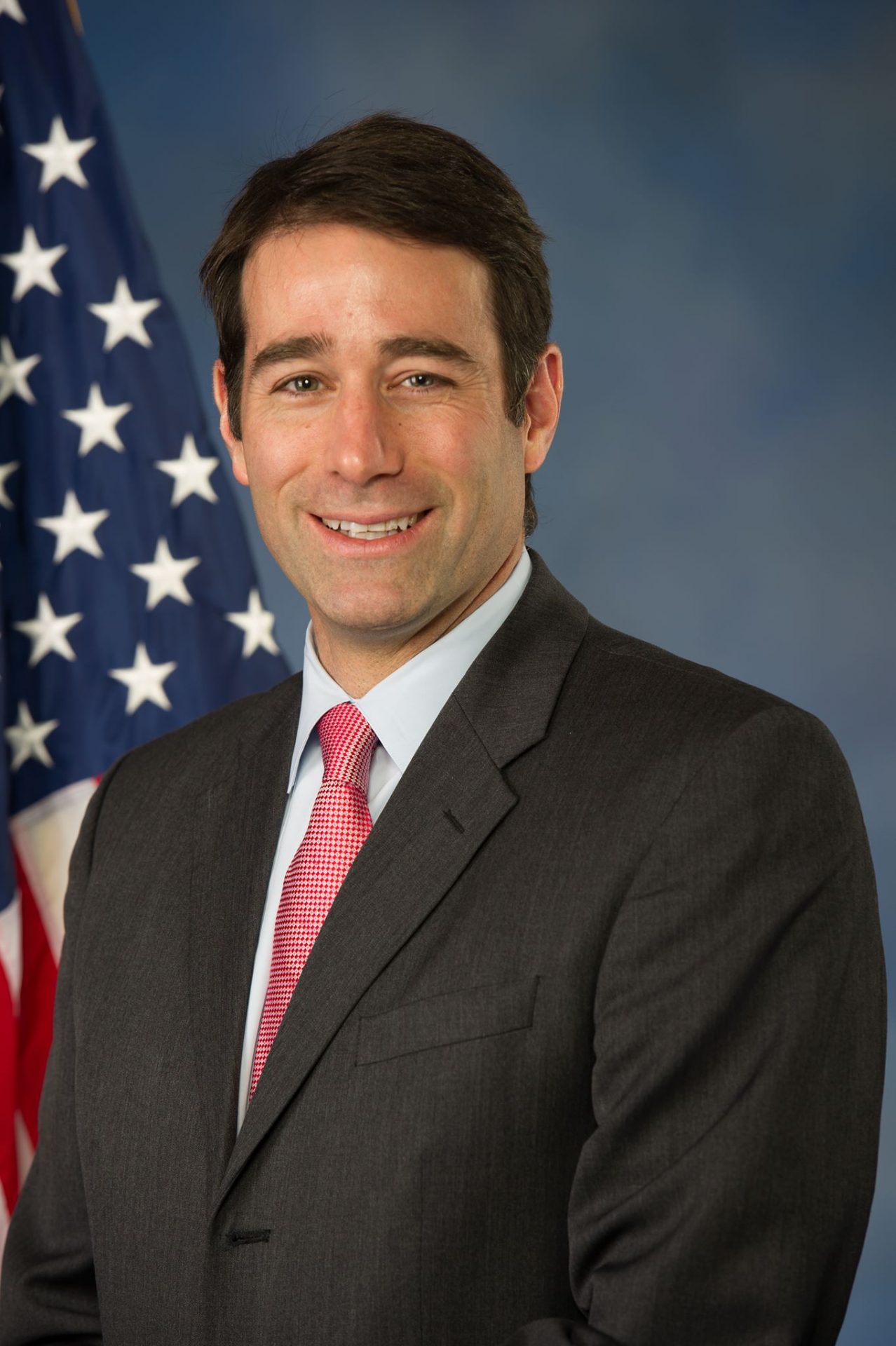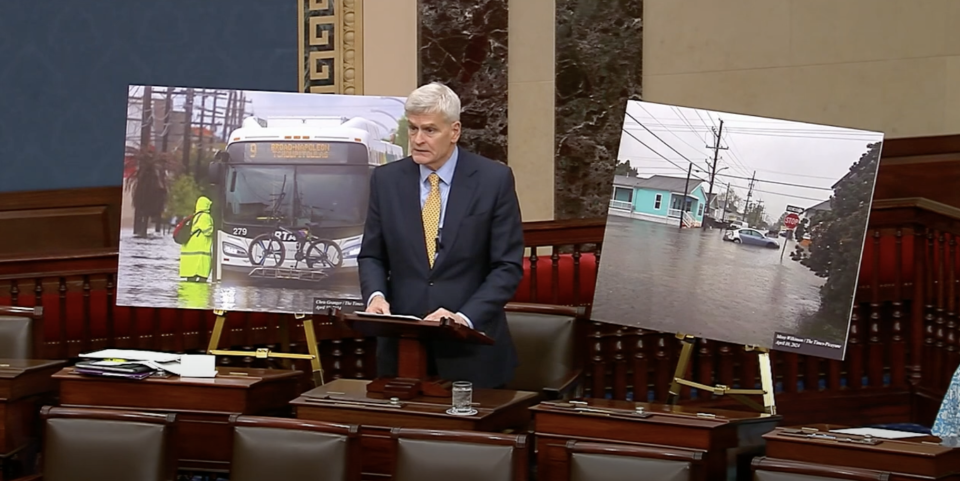
Graves Secures Funding to Improve Performance of America’s Military
March 11, 2022Downtown Jeaux to Host Blood Drive March 12
March 11, 2022Governors John Bel Edwards of Louisiana, Kevin Stitt of Oklahoma, and Asa Hutchinson of Arkansas announced their states have entered into a bipartisan three-state partnership to establish a regional hub for development, production, and use of clean hydrogen as fuel and manufacturing feedstock.
In entering the agreement, Louisiana, Oklahoma, and Arkansas intend to compete as a unit for funding established in the Infrastructure, Investment, and Jobs Act (IIJA) of 2021, in which the United States Department of Energy (DOE) is directed to seek out and select regional clean hydrogen hubs to fund. The act specifies that such hubs should be selected by DOE based on a mix of feedstock available to produce hydrogen, available users of hydrogen, geographic locations, and potential effects on employment, among other considerations.
“The state of Louisiana, as well as our partner states in this effort, have a long history of producing and transporting fuels and feedstocks in liquid and gas forms, as well as a significant population of industrial end-users with the potential to make use of hydrogen as fuel or as part of manufacturing processes,” Governor Edwards said. “This is an extension of Louisiana’s ongoing efforts in diversifying the makeup of our energy sources and ensuring an economically and environmentally balanced approach to cleaner use of traditional fuels and transition to new potential energy sources.”
“Oklahoma is honored to join in forming this partnership, not because of convenience, or necessity, but rather because we share a similar vision and goals for the production, use, and economic impact that can result from creating this hydrogen economy. Like our partners, we believe that creating as many end-use cases for commercialization with as many private partners is the quickest and best mechanism to spur real demand for this clean energy. The resources and opportunities in Oklahoma are complementary to our partners and tailor-made for a diverse hub application to compete with others around the country,” said Governor Stitt.
“In Arkansas, we have a growing and diverse energy portfolio and natural resources vital to any successful regional hub. We are the proud home of prominent partners and companies critical to U.S. commerce with a strong history of environmental leadership and track records of reducing emissions. We are excited to partner with our neighbors in Louisiana and Oklahoma to put forward a winning application,” explained Governor Hutchinson.
Each governor appointed the following individuals from their respective state to serve as designee to the partnership: Louisiana Department of Natural Resources Secretary Thomas Harris; Oklahoma Secretary of Energy & Environment Kenneth Wagner; and Arkansas Secretary of Energy & Environment Becky W. Keogh. The designees will serve as the primary authority and point of contact for coordinating governmental, research, and private-sector efforts to promote hydrogen development and use.
These states are perfectly situated to demonstrate the entire value chain of hydrogen and uniquely situated to tackle the hard-to-decarbonize sectors like industrial, manufacturing, and transportation. The partnership builds upon existing advantages, such as an inland seaport system that runs from Oklahoma through Arkansas and down the Mississippi River to the Gulf of Mexico in Louisiana, existing intermodal rail, existing pipeline infrastructure that runs from Oklahoma through Arkansas to the Gulf of Mexico, and some of the most valuable interstate freight highways in the United States. More importantly, hydrogen is already available for demonstration with new large clean hydrogen production hubs scheduled to come online in the near future.
Hydrogen is presently used in many manufacturing processes and has increasingly gained interest as a clean-burning fuel source that could help reduce carbon emissions from manufacturing, heavy industry, and long-haul trucking. Currently, a great deal of hydrogen is produced in the partner states by separating methane into its components of hydrogen and carbon. While this process still produces waste carbon, the process can be made much cleaner by capturing the waste carbon and injecting it into permanent underground storage zones. There has also been growing interest and investment in making the electrolysis of water to release hydrogen more commercially available.
The three states have been focused on hydrogen as an additional resource in their all-of-the-above approach to a diversified and clean energy portfolio. In late 2021, a hydrogen-from-natural-gas project with carbon capture and sequestration was announced in Louisiana and a large electrolytic production hub was announced in Oklahoma.
“Here in Louisiana, we’ve already seen and participated in action to produce more hydrogen through cleaner processes, and with a partnership of our state with Arkansas and Oklahoma sharing information at the level of state government, between our research institutions, and between our industry groups, we expect to be able to accelerate progress in both the production and use of hydrogen,” Governor Edwards said.
“From our shared industrial base and established pipeline infrastructure to our shared history of providing fuel and feedstock to end users in our states, Louisiana and our partners in this effort have the potential to hold a strong leadership role in the future of hydrogen development and its part in transitioning from traditional fuels to what comes next,” Louisiana Secretary Harris said.
The agreement also includes provisions for:
Promoting investment in infrastructure for production and transportation of low-carbon hydrogen
- Prioritizing direct capture of carbon for all phases of hydrogen development
- Working with industry, transportation networks, and ports to connect major facilities with high carbon footprints to hydrogen infrastructure for fuel blending and reduction of CO2 emissions
- Working to support hydrogen production to support all phases of industry that can use hydrogen as a fuel source






